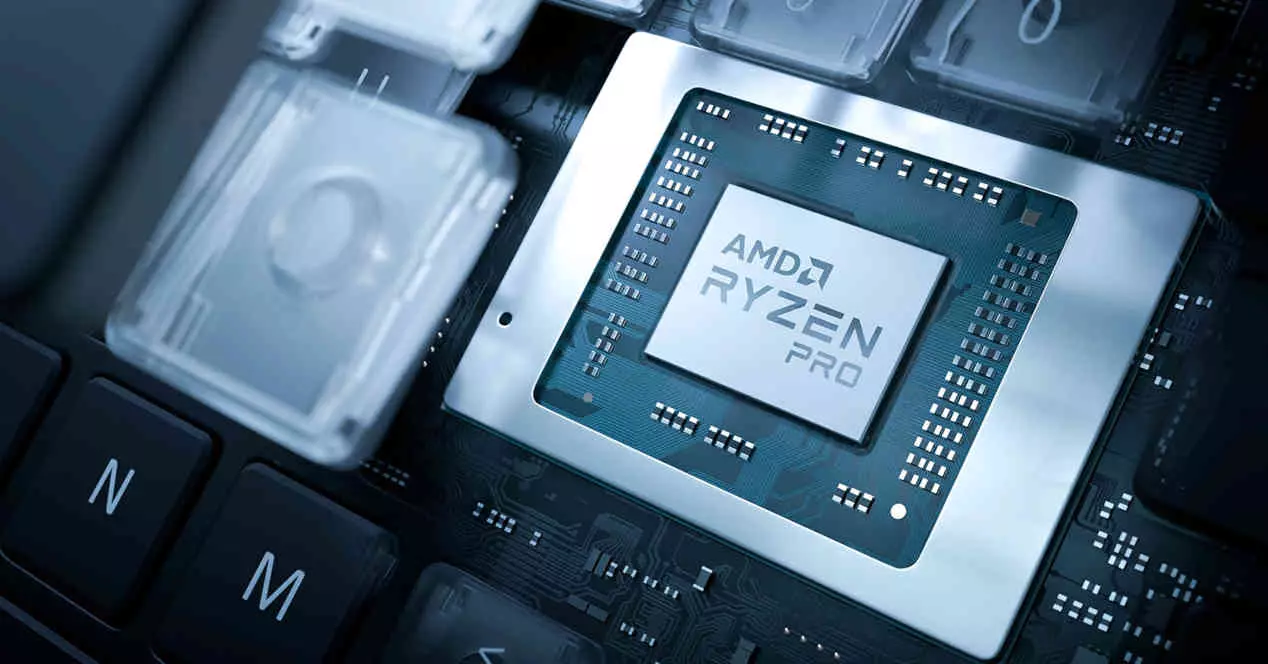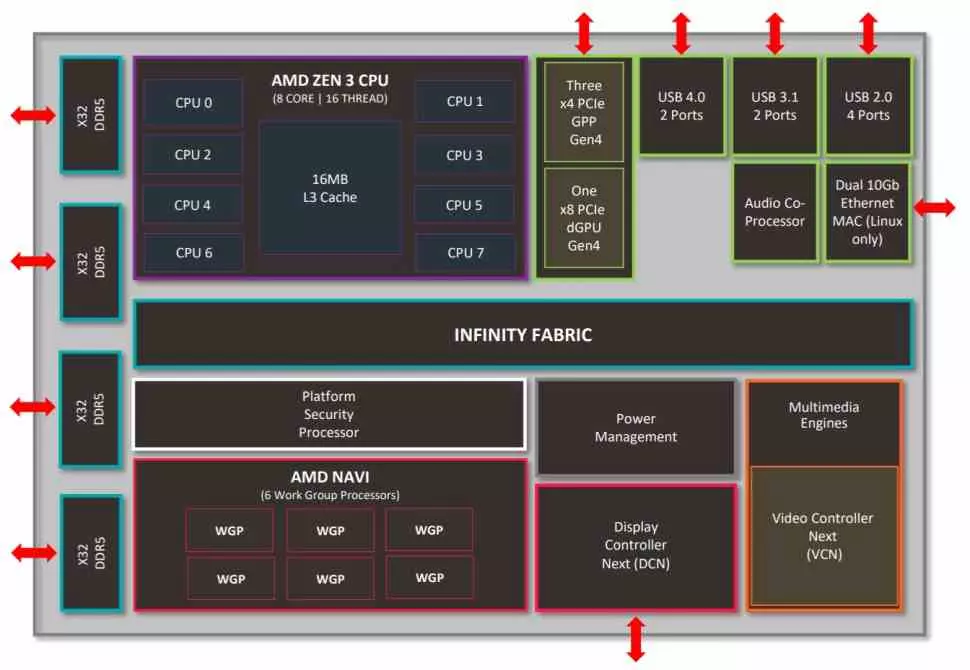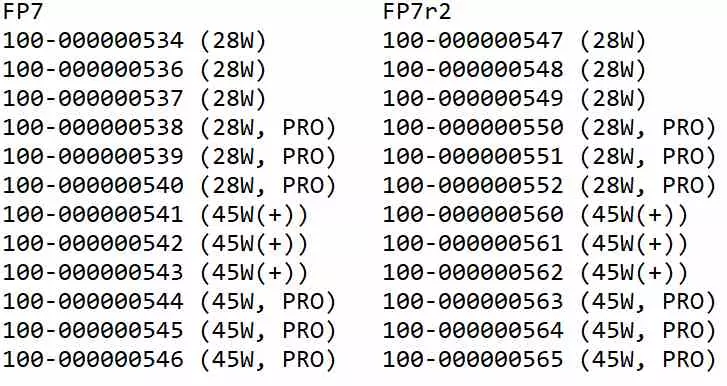
There are just a few days left for the presentation of the new AMD APUs for 2022, which will surely receive the names of 6000U, 6000H and 6000G in their different versions. Well, new details have just been filtered that allow us to get a more precise idea of what Lisa Su’s preparing for laptops for this year. So let’s see what we should expect from Rembrandt APUs.
If we look closely, Intel has upgraded its APUs to its newer technologies in two generations. In the first under the Cézanne or Ryzen 5000 architecture, the Zen 3 architecture was implemented, now with Rembrandt we are going to see changes in the rest of the processor and the vast majority of them are very important, since they translate into a significant jump in performance.
These would be the changes for the AMD Rembrandt APUs
Due to the constant flood of information, many of them will already be known to you, as is the case of support for DDR5 memory, which will mean a new unified memory controller or UMC designed to support the new memory standard, being the first AMD processor in do it. In total up to 4 channels of DDR5 memory. On the other hand, some models will have support for LPDDR5.
The second point to note is in terms of the interfaces for peripherals built into the CPU. We have 3 sets of 4 PCI Express 4.0 lanes to interfere with the motherboard chipset or NVMe SSD drives and 8 lines of the same type for a graphics card that we want to connect to the system. So as said for months, AMD has decided do not adopt PCIe Gen 5 at this time. Also noteworthy is the support for 10 Gb EthernetAlthough only for Linux, let’s not forget that fiber optics at these speeds is getting closer and closer. Regarding the support for USB ports we can see how they have been added 2 USB 4.0 ports
Although the highlight of all is the change in architecture of the integrated GPU. We will finally say goodbye to GCN Vega to adopt RDNA or Navi, specifically with a configuration of 6 WGP or 12 Compute Units, being the highest of an AMD APU to date. A higher-than-expected figure that makes us wonder if certain products have hit the gas too early when it comes to adopting an AMD APU in their systems.
AMD also joins the 28 W of TDP
AMD is manufacturing its Ryzen 6000 APU under TSMC’s 6nm node, which allows up to 18% higher density than the 7nm used by current AMD processors. However, everything indicates that the size could be much larger and all due to the adoption of the new DDR5 interfaces, peripherals such as USB 4.0, an iGPU with a more advanced architecture such as RDNA 2 and all this we cannot forget improvements in the CPU Zen 3.
We will have two versions of the Rembrandt or Ryzen 6000 APUs, the first of them will make use of the FP7 packaging and the second of the FP7r2. The size at first glance will be the same, but they will differ in that the first type will have support for DDR5 memory and, therefore, the RAM of said laptops will come in SO-DIMM modules, the second type will support soldered-on board LPDDR5 memory.
If we look at the list that heads this section we can see how AMD, like Intel, has also adopted the standard of 28 W of TDP for your Rembrandt APUs. It is surprising not to see any 15 W AMD Rembrandt APUs. The fact that AMD has also adopted the new TDP standard that its rival means that we are going to see a lot of models with variants of Intel and AMD under the same form factor.





